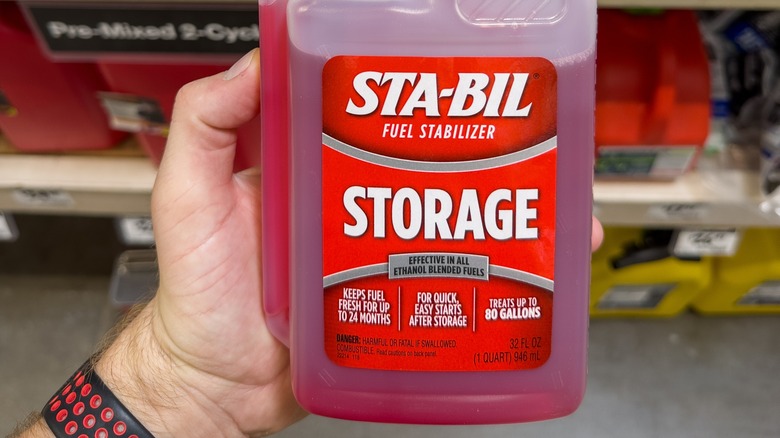Does The Gas In Your Car Go Bad If It Sits Too Long? Here's What You Need To Know
The average fuel economy of American vehicles has been steadily rising since the turn of the century, from 19.3mpg in 2004 to a record high of 25.4 in 2020. While this means drivers are spending less on gas and putting fewer harmful emissions into the environment, it also means fuel is sitting in our tanks a little longer than it did back in the days of gas-guzzling muscle cars.
While most of us are probably still burning through a full tank far faster than it takes for fuel to go bad, what if you're going on an extended vacation or storing your car for the winter? What exactly is it that makes gas go bad, exactly how long does it take, and what can you do to prevent it from happening?
Gasoline stays fresh for a month or two until the more volatile compounds start to evaporate, reducing the combustibility of the fuel. If you have a car that is sitting in your driveway unused, simply topping it off with some fresh fuel occasionally will make sure fuel aging doesn't become too much of a problem.
For long-term storage, use a fuel stabilizer
If you're going to store your vehicle unused for a longer period of time, add a fuel stabilizer to fresh fuel before parking it. Fuel stabilizers help prevent the buildup of gum and varnish that can clog fuel lines, filters, and injectors.
Stations that don't get much business or experience wide temperature fluctuations can end up with moisture or rust in their underground tanks. If you get a tank of bad gas from one of these stations, you might notice your vehicle has trouble starting or accelerating, or it might stall while idling or suffer a loss in fuel economy. Should this happen to you, changing your fuel filter and cleaning your fuel injectors should get your vehicle running in top form again. Keep in mind that, while you know how often you replenish the fuel in your own tank, you don't always know how old the gas was at the station when you were filling up.

